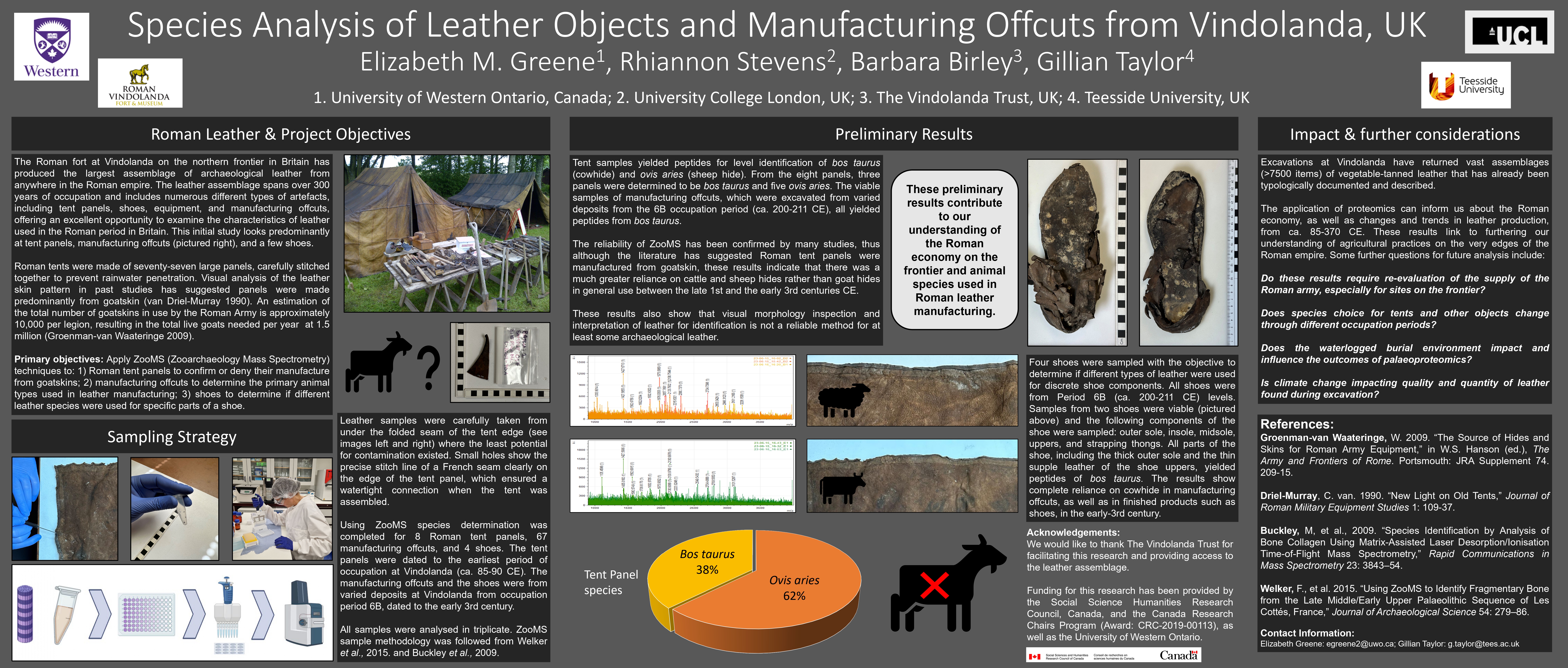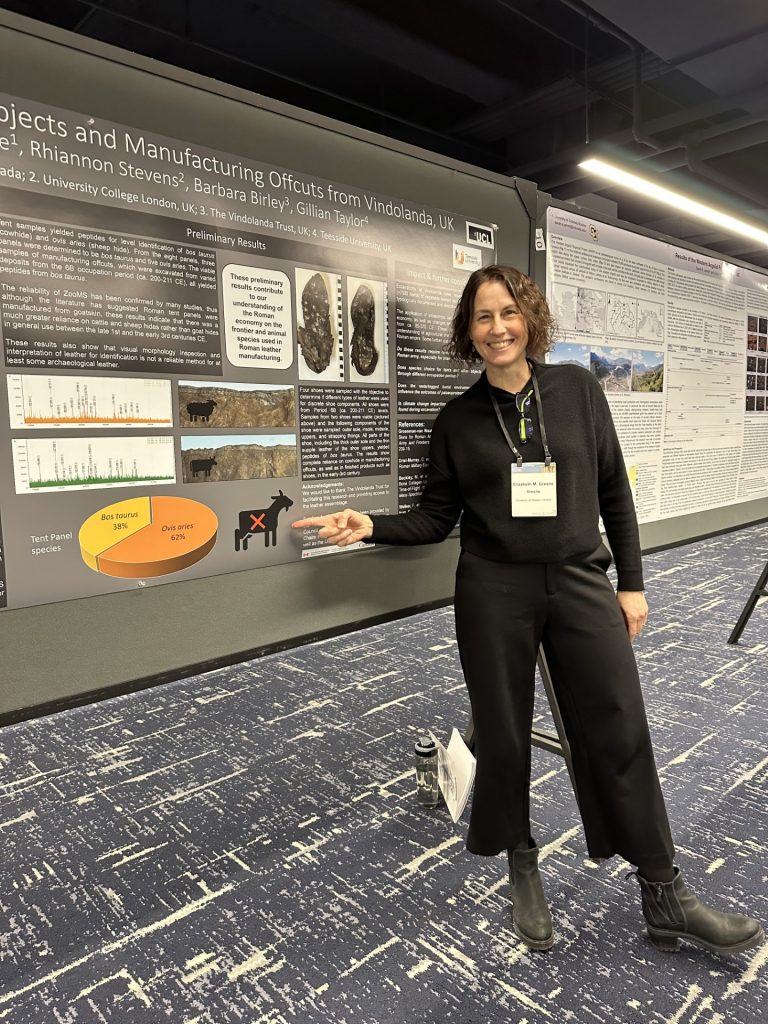January 29, 2024
At the 2024 AIA Annual Meeting (Chicago, IL), we saw a variety of posters featuring work from around the world. Annual Meeting participants were treated to an incredible array of diverse research presented in a visual format.
Three Poster Awards are given out during the Poster Award Sessions: the Best Poster Award, First Runner-Up, and the Student Poster Award.
We asked the winners of this year’s Best Poster Award a few questions about themselves and their project:
Best Poster Award Recipients: Elizabeth (Beth) M. Greene, Rhiannon Stevens, Barbara Birley, and Gillian Taylor
“Species Analysis of Leather Objects and Manufacturing Offcuts from Vindolanda, UK”
The Roman fort at Vindolanda on the northern frontier in Britain has produced the largest assemblage of archaeological leather from anywhere in the Roman Empire. The assemblage spans over 200 years of occupation and includes numerous different types of artifacts, offering an excellent opportunity to examine the characteristics of leather used in manufacturing in the Roman period. This poster presents the preliminary analysis of the animal species used for different types of objects and manufacturing processes.
Historically, it has been thought that Roman military tent panels were made from goat hides, and it is often stated that the uppers of some shoes utilized soft leathers such as goat or deer skin. Using ZooMS analysis (zooarchaeology mass spectrometry) we provide more specific protein analysis for the determination of species used for these products. Preliminary work shows a much higher reliance on cattle hides than goatskin in samples taken from the late first and the early third centuries C.E. Eight panels from the same tent dating to the first period of occupation at Vindolanda (ca. 85–90 C.E.) revealed that none were made of goat skin; three panels were made from cattle hide and five came from sheep hide. Moreover, all constituent parts from four shoes (insole, midsoles, outer sole, thong, uppers, and heel stiffener) were tested, three of which were comprised entirely of cattle hide (the fourth was a nonviable sample).
Considering the perceived wisdom up to this point, these are very interesting and somewhat unanticipated results. This initial report of results is important to counter the expectations that were formed before the development of scientific analyses, which now provide accurate results of species used in Roman leather manufacturing.

How long have you been a member of the AIA?
BMG: I’ve been a member of the AIA since my student days, starting in around 2001 or 2002. I’ve been a life member for a decade or so.
How many Annual Meetings have you attended (in-person or virtually).
BMG: I’ve attended every Annual Meeting since my first in 2003, which was in New Orleans. It’s my favorite time of year!
How did you first come to this project/topic?
BMG: This research on archaeological leather sprung from my work on women in military communities. At Vindolanda it was the shoes that first indicated that women and children were a significant part of the population at this military fort. I worked on this subject for my PhD (completed in 2011) and this work naturally spun into working with the entire leather assemblage at Vindolanda. The collaboration with Gillian Taylor from the School of Life Sciences at Teesside University opened so many doors to bringing scientific analysis and Roman archaeology together to fully explore the role of leather manufacturing and object use in the Roman world.
What is one cool fact or interesting result from this project that didn’t make it onto the final poster?
BMG: This research continues (in fact, the prize money has already been spent on lab fees for our next round of testing. Thank you!) and our next step is to take the research on tent panels much further. Our initial results presented on the poster looked at eight tent panels from the same period of occupation, which revealed five sheep and three cow hides were used. In late January 2024 Dr. Taylor will run samples from 96 tent panels from all different periods spanning from the 80s to the 280s CE using ZooMS (Zooarchaeology Mass Spectrometry). We’ll keep you posted on the results soon!
What is your advice to students/new authors who are preparing posters for upcoming conferences?
BMG: Posters are a great way to interact in a serious way with many colleagues and interested researchers. Make sure to have clear goals and conclusions set out in a clear way so readers with only a few minutes will understand your subject. You can also have a printout of your poster or at least something with your title and email so people can get in touch after the conference. I’ve started many fruitful discussions this way!
